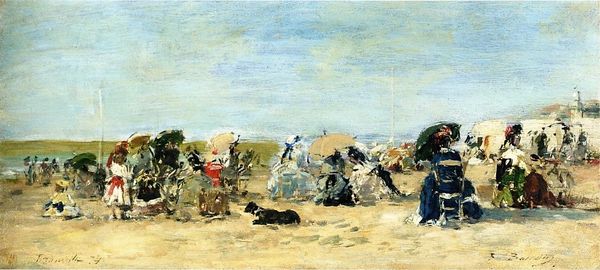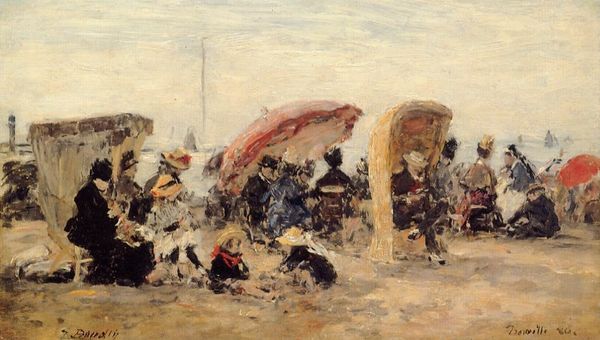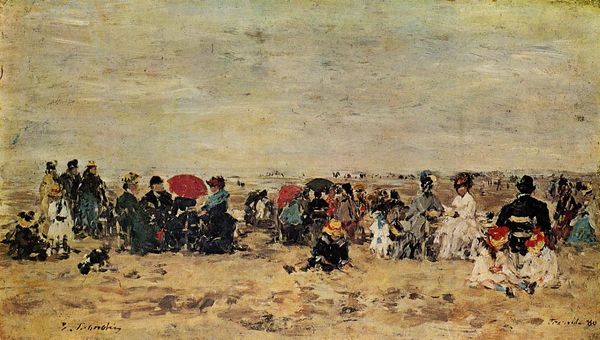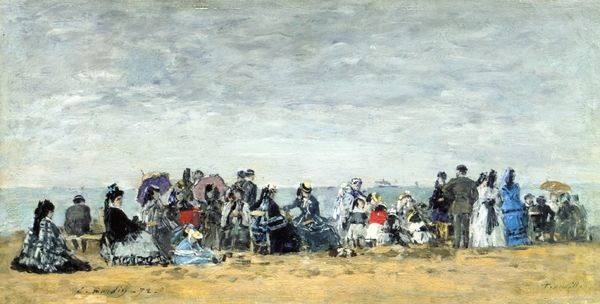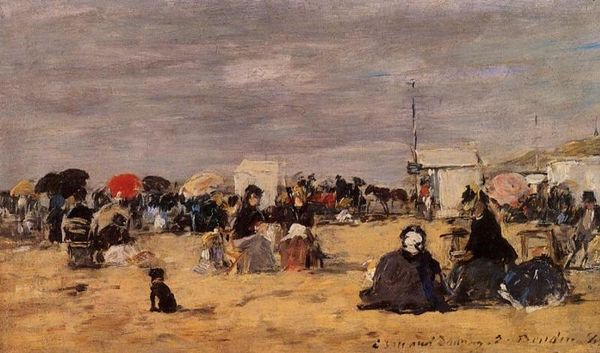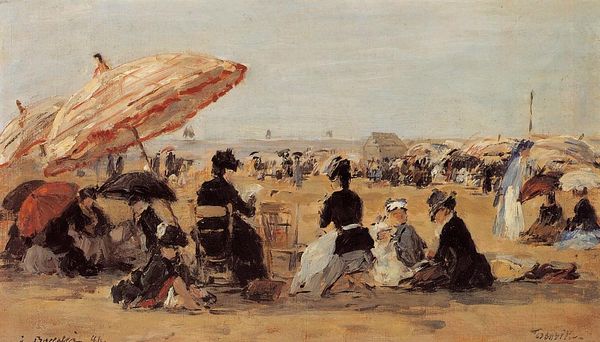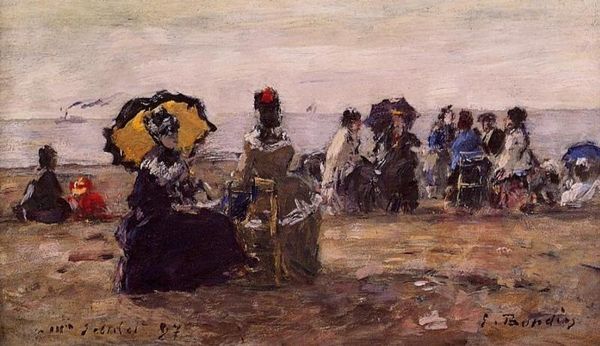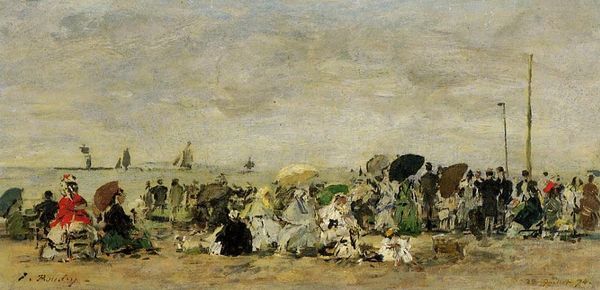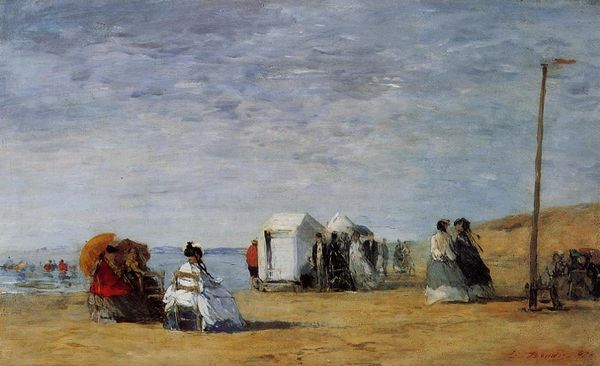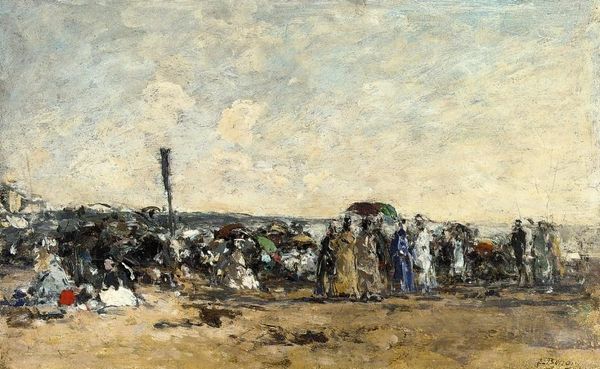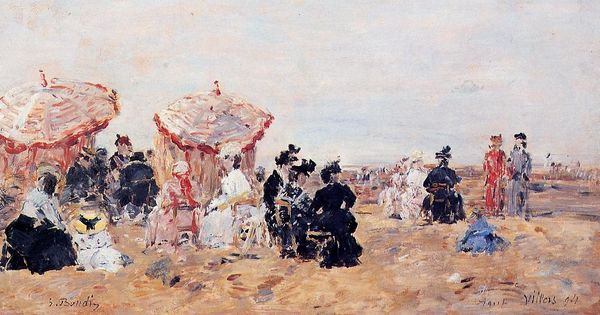
painting, plein-air, oil-paint
#
painting
#
impressionism
#
plein-air
#
oil-paint
#
landscape
#
impressionist landscape
#
oil painting
#
genre-painting
Copyright: Public domain
Editor: So, this is "Beach Scene" by Eugène Boudin. It's an oil painting, likely done *en plein air*. It feels quite observational, a quick capture of a fleeting moment. I'm curious, what catches your eye in this painting? Curator: What I see is not just a beach scene, but a snapshot of industrializing society's leisure. Consider the materials: oil paint, mass-produced canvases readily available. Boudin's quick strokes and attention to light demonstrate not just Impressionistic technique, but also efficiency and responsiveness to market demands. Look closely at those figures – they are not generalized forms but specific depictions of fashionable individuals engaged in consumption. Editor: Consumption, how so? Curator: The clothing, the umbrellas, the act of leisurely seaside recreation. All signify a rising middle class with disposable income and the time to spend it. Boudin, intentionally or not, captures this societal shift. Even the location - the seaside resorts of Normandy were being shaped by railroad networks bringing city dwellers out for a day by the sea, shifting both landscape and leisure into commodities. Editor: I never thought about the seaside *itself* being a commodity! Does the paint application support this reading? Curator: Precisely. The quick, visible brushstrokes, typical of *en plein air* painting, can also be viewed as a form of efficient production, reflecting the industrial spirit of the age. He wasn't just painting pretty pictures; he was participating in a new mode of artistic production tied to a changing society. The *speed* is itself part of the story of industrialization. Editor: That’s fascinating. I’ll definitely be looking at Impressionism differently now. It makes me think about the production of leisure and the business of art-making at that time. Curator: Exactly. Art never exists in a vacuum. Analyzing its materiality reveals larger economic and social structures.
Comments
No comments
Be the first to comment and join the conversation on the ultimate creative platform.

